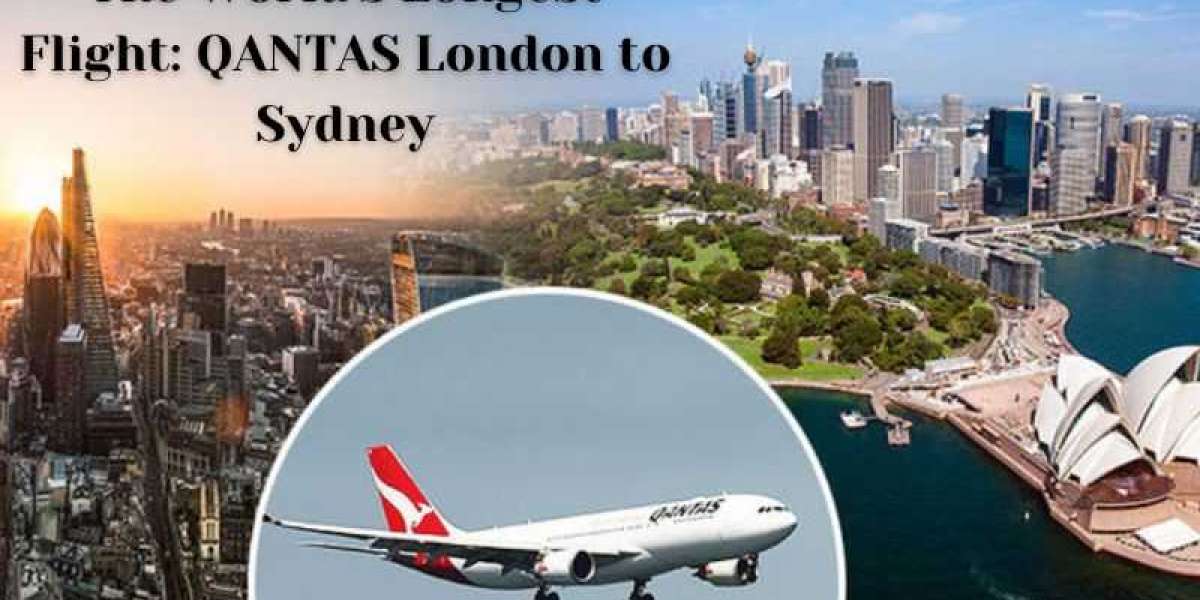In an ambitious move that underscores the advancements in aviation technology and the growing demand for ultra-long-haul flights, QANTAS has launched the world's longest nonstop flight, connecting London to Sydney. This remarkable journey, covering approximately 17,800 kilometers, is a testament to the capabilities of modern aircraft and the resilience of human endurance.
A New Era in Aviation
On November 15, 2019, QANTAS operated its first research flight from London to Sydney Kingsford Smith Airport. This historic flight, part of the airline's Project Sunrise initiative, aimed to test the feasibility of ultra-long-haul travel and gather data on passenger and crew health and well-being. The flight lasted 19 hours and 19 minutes, breaking previous records and setting a new benchmark for long-distance air travel.
The Aircraft
The aircraft chosen for this groundbreaking journey was the Boeing 787-9 Dreamliner. Known for its fuel efficiency, advanced aerodynamics, and passenger comfort, the Dreamliner was specifically designed for long-haul flights. The aircraft's range and ability to minimize jet lag through innovative cabin features made it an ideal choice for this pioneering flight.
Passenger Experience
Passengers on this inaugural flight were treated to a unique experience, with QANTAS focusing heavily on their comfort and well-being. The flight featured a variety of measures aimed at reducing the effects of long-haul travel, such as specialized lighting to simulate different times of day, a carefully curated menu designed to aid sleep and wakefulness, and onboard exercise programs to keep passengers active.
Additionally, QANTAS collaborated with sleep researchers from the University of Sydney to monitor the effects of the extended flight on passengers and crew. Data collected during the flight will be used to develop strategies to improve the overall experience on future ultra-long-haul routes.
Crew Management
Managing crew fatigue on such a lengthy flight presented a significant challenge. QANTAS implemented a comprehensive rest and work schedule for the flight crew, ensuring they were adequately rested and alert throughout the journey. This included designated rest areas on the aircraft and a rotation system that allowed crew members to take breaks and sleep during the flight.
Environmental Considerations
One of the key concerns with ultra-long-haul flights is their environmental impact. QANTAS has committed to offsetting the carbon emissions from its Project Sunrise flights, aligning with the airline's broader sustainability goals. The use of the Boeing 787-9, with its lower fuel consumption and reduced emissions, also reflects QANTAS's efforts to minimize its environmental footprint.
Future Prospects
The success of the London to Sydney flight has significant implications for the future of air travel. QANTAS plans to launch regular nonstop services between Sydney and both London and New York by 2023, provided the airline can secure aircraft capable of performing these routes efficiently. The introduction of these flights would revolutionize international travel, offering passengers unprecedented convenience and time savings.
Conclusion
The QANTAS London to Sydney flight represents a bold step forward in aviation, pushing the boundaries of what is possible and setting new standards for long-haul travel. As the airline continues to refine and expand its ultra-long-haul services, passengers can look forward to a new era of connectivity and comfort in air travel. The successful execution of this marathon flight not only showcases QANTAS's commitment to innovation but also paves the way for a future where the farthest corners of the globe are more accessible than ever before.







